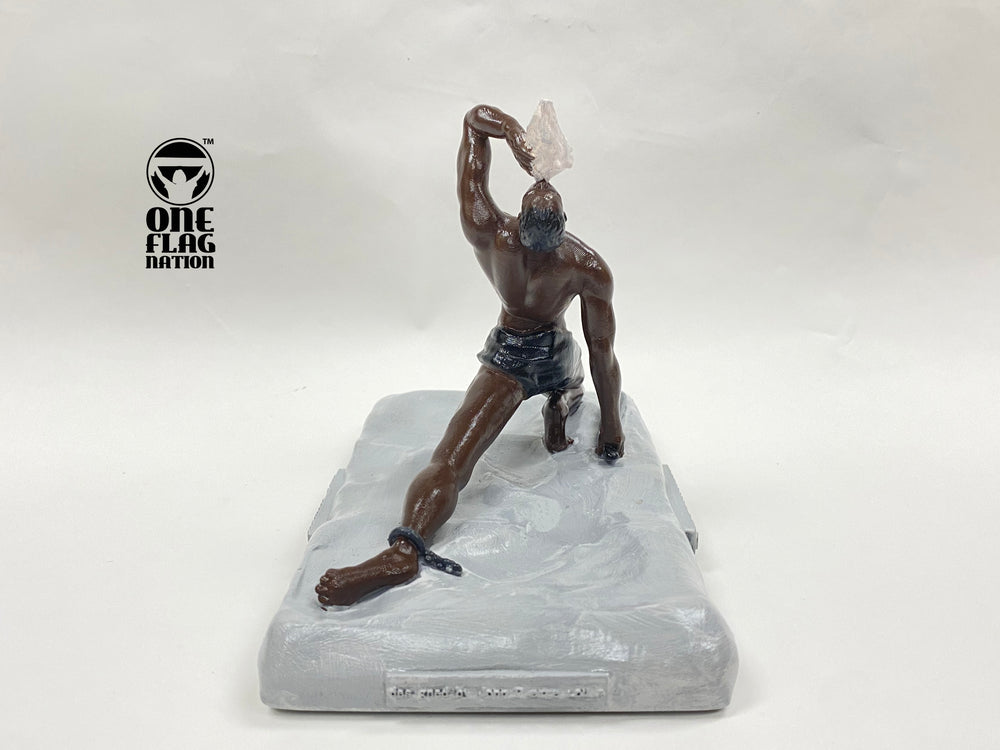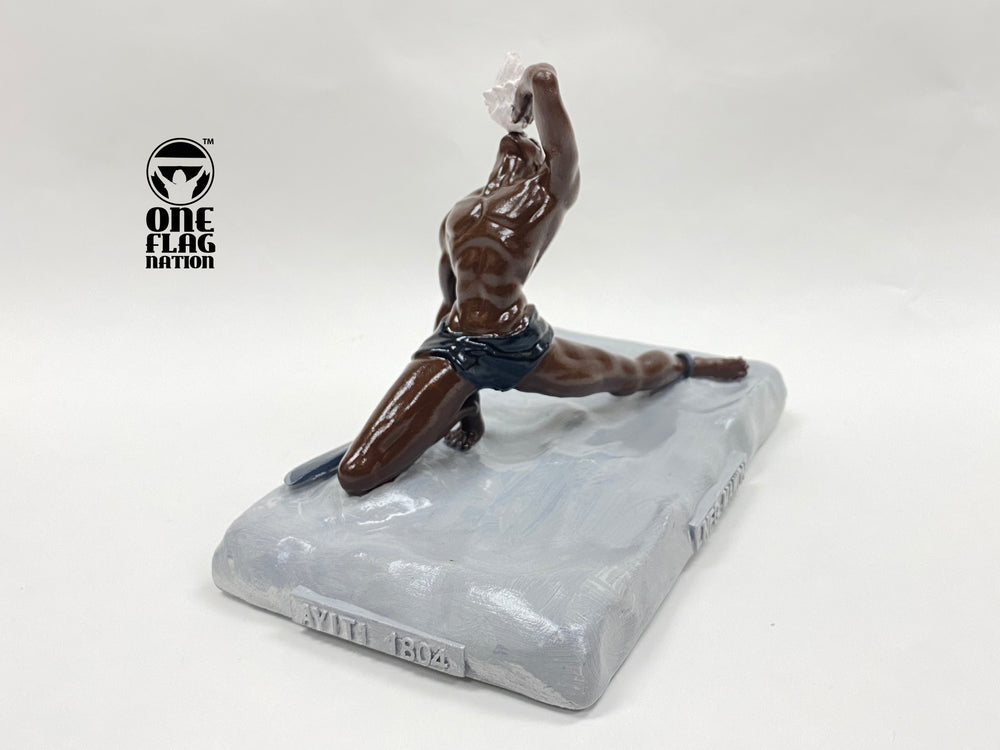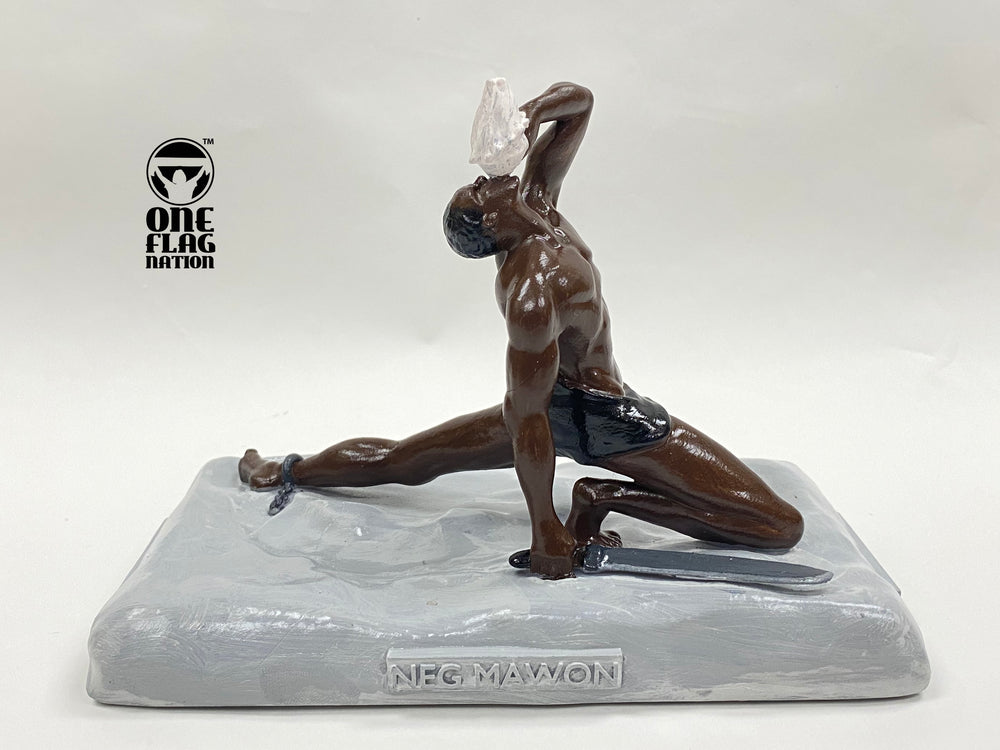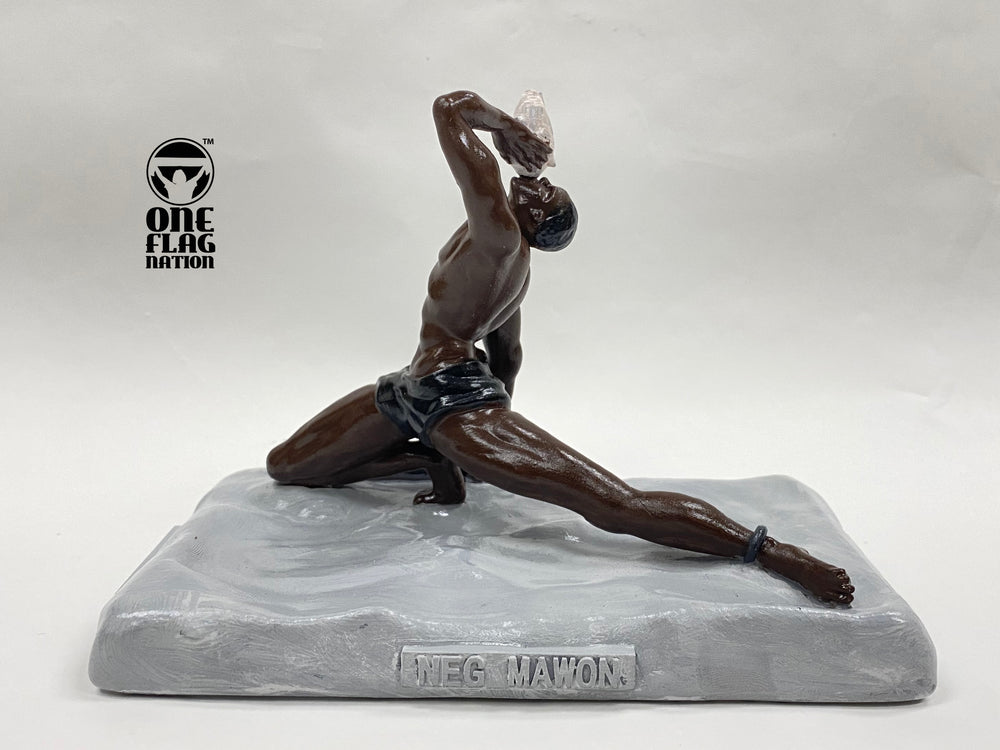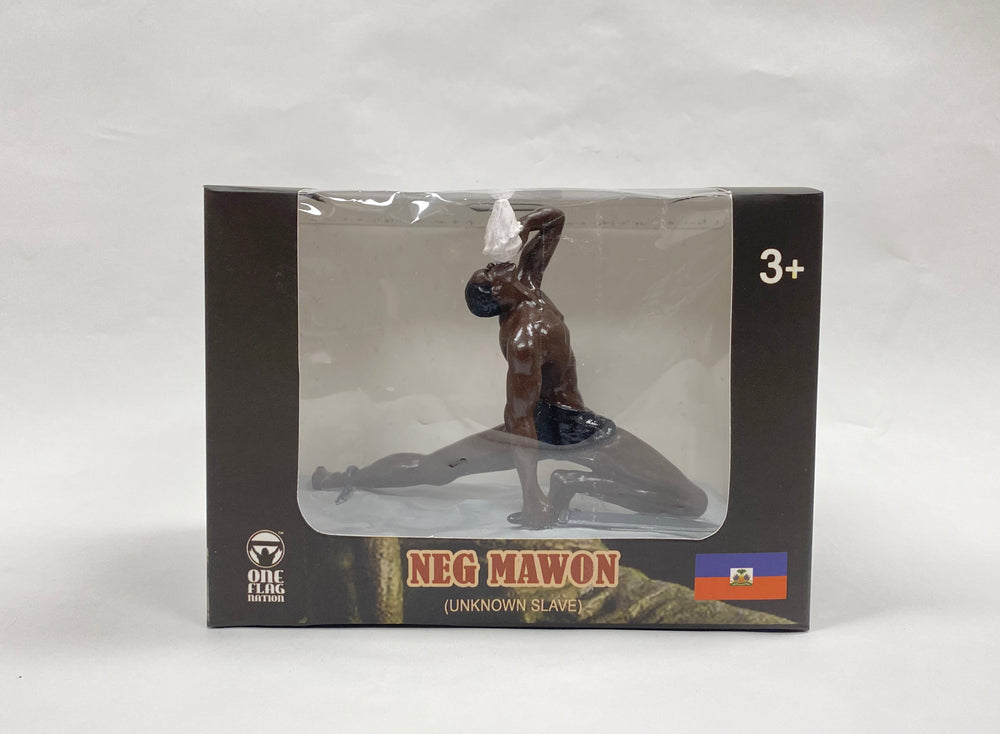Nèg Mawon
Nèg Mawon
Couldn't load pickup availability
HISTOIRE DE NÈG MAWON
Face à la brutalité et à la déshumanisation du système esclavagiste à Saint-Domingue, les esclaves prenaient souvent la fuite. Un esclave qui fuit la propriété de son maître était un nègre marron.
Le fugitif se cache souvent dans des lieux inaccessibles pour survivre ou organiser la résistance.
Phénomène très répandu en Amérique et dans les Antilles, les marrons parvenaient parfois à se regrouper en de véritables communautés clandestines.
Selon le Code noir, le marronnage est puni par la mutilation puis par la mort à la troisième récidive.
Les annonces de fuite publiées dans dans les journaux de la colonie présentaient l’esclave comme un simple objet perdu ou un animal égaré.
Les maîtres pouvaient aussi engager des chasseurs d’esclaves qui ramenaient alors au maître une oreille et une main du fugitif après l’avoir exécuté. Et quand on attrapait un marron vivant, on lui coupait le tendon d’Achille afin qu’il ne puisse plus courir. D’autres punitions pouvaient être infligées comme par exemple le marquage de la fleur de lys à l’épaule.
Emprunté à l’espagnol, le terme « marron » qualifiait le retour d’animaux domestiques à l’état sauvage. À partir de 1540, ce mot va désigner les esclaves fugitifs.
L’un des plus célèbres marrons de l’histoire est François Mackandal, précurseur de la révolution de Saint-Domingue.
Face à la brutalité et à la déshumanisation du système esclavagiste, le « marronnage » était une forme de résistance pratiquée par des hommes et des femmes qui préférait la clandestinité à la soumission.
En 1967 le sculpteur Albert Mangonès réalise une sculpture en bronze baptisée « Marron Inconnu » en hommage à ces martyres de la liberté.
Cette œuvre mondialement connue trône encore aujourd’hui au Champ de Mars à Port-au-Prince.
STORY OF NÈG MAWON:
Faced with the brutality and dehumanization of the slave system in Santo Domingo, slaves often fled. A slave who ran away from his master's property was a brown Negro.
The fugitive often hides in inaccessible places to survive or organize resistance.
A very widespread phenomenon in America and the West Indies, the maroons sometimes managed to group together into real clandestine communities.
According to the Code Noir, marooning is punishable by mutilation then by death on the third offense.
The escape announcements published in the colony's newspapers presented the slave as a simple lost object or a lost animal.
Masters could also hire slave catchers who then brought back to the master an ear and a hand of the fugitive after having executed him. And when we caught a chestnut alive, we cut its Achilles tendon so that it could no longer run. Other punishments could be inflicted, such as being branded with the fleur-de-lis on the shoulder.
Borrowed from Spanish, the term “brown” described the return of domestic animals to the wild. From 1540, this word will designate fugitive slaves.
One of the most famous maroons in history is François Mackandal, precursor of the Santo Domingo revolution.
Faced with the brutality and dehumanization of the slave system, “marronage” was a form of resistance practiced by men and women who preferred clandestinity to submission.
In 1967 the sculptor Albert Mangonès created a bronze sculpture called “Marron Inconnu” in homage to these martyrs of freedom.
This world-famous work still stands today at the Champ de Mars in Port-au-Prince.
Share
